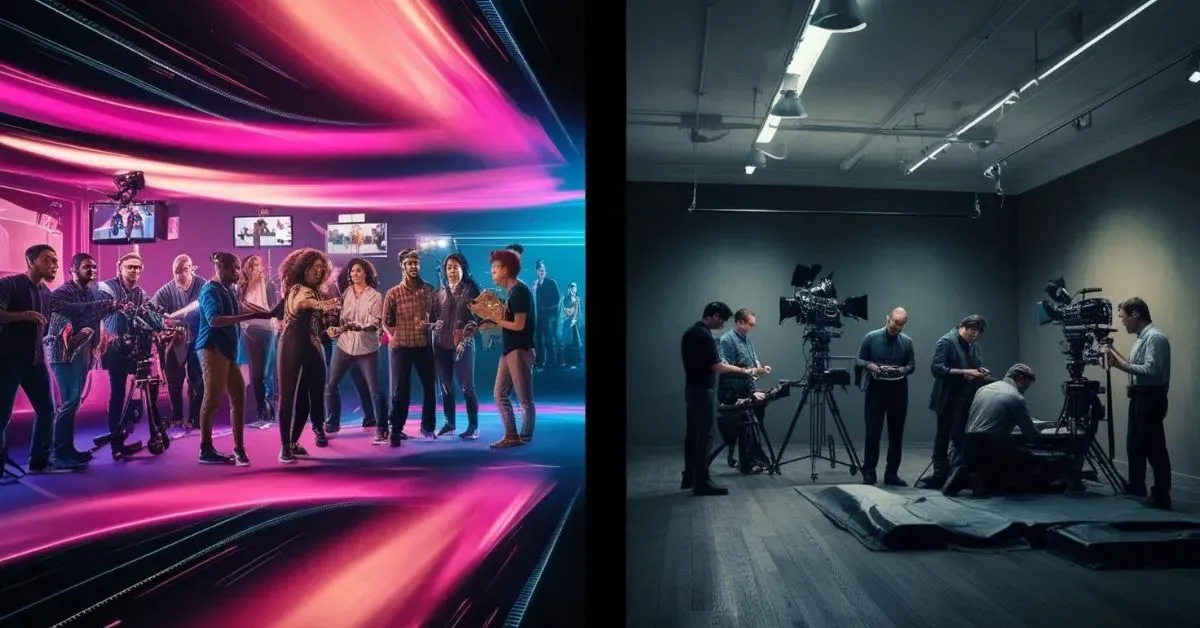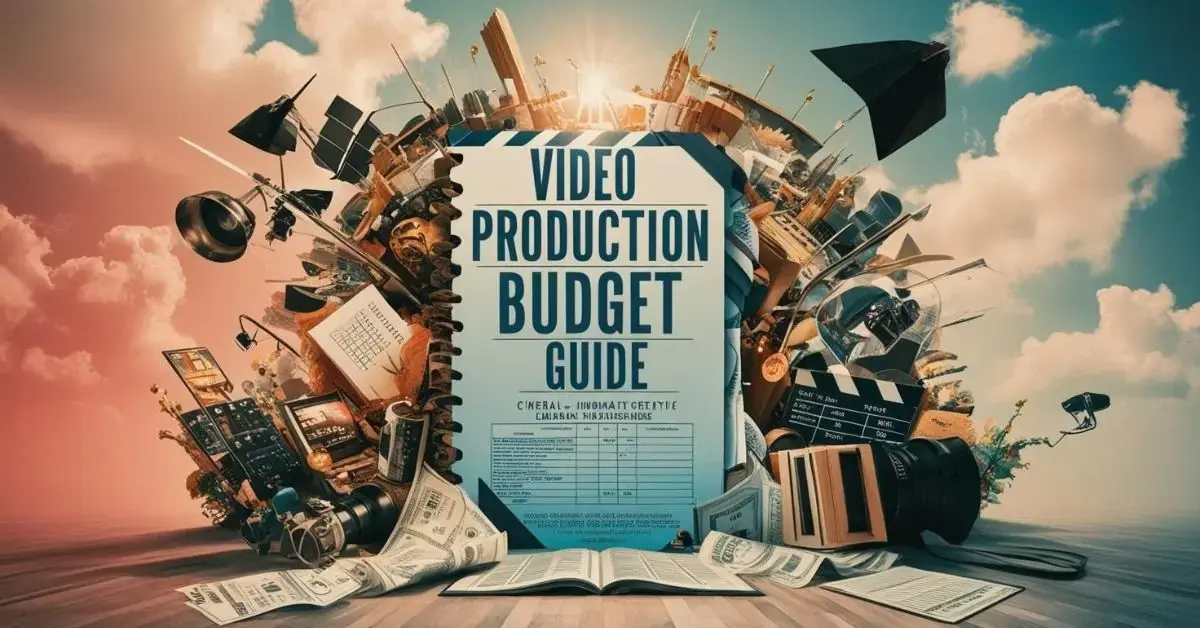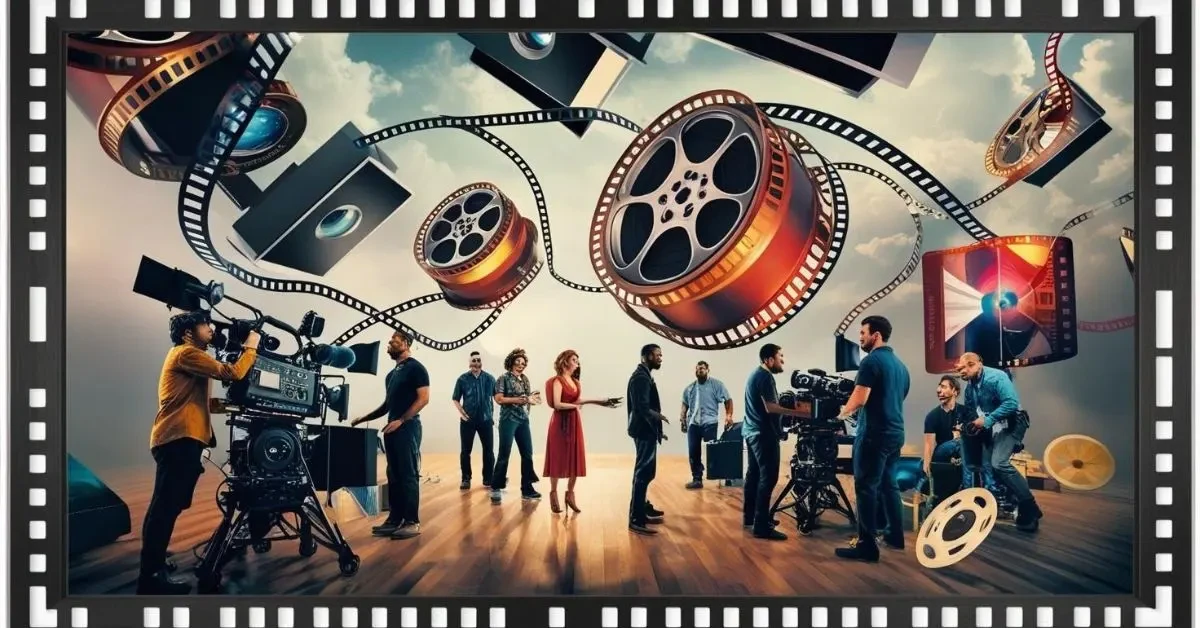The lines between video and film production are becoming confusing in the digital landscape today, but particular distinctions still exist. While both try to tell a story through moving images. They have very different methods of budget, distribution and target audience. Most people think of corporate videos, commercials, online content, social media marketing, and video production when they hear about video production. In contrast, if you’re in film production, this means cinematic storytelling, implying movies, documentaries, and television series.
Large crews, high-end equipment, and heavy post-production are typical in film production. In contrast, video production allows you to be more flexible in the amount of output. Especially in terms of cost and the production process as far as platforms are concerned. Moreover, audiences for which films are intended differ from audiences for videos as films are designed to be watched in theaters, streamed on streaming services, or aired on television. Videos are generally crafted for digital marketing, branding and promotional purposes.
In this article, we explore these differences: core elements, processes, tools, and techniques. It is important to grasp the differences as a prospective professional in the sphere of visual storytelling, an aspiring or current business owner renting out video or film production services, or just someone interested in the minutiae of video and film production.
What is Video Production?
Video production can be defined as the process of making a video for any purpose. Such as commercials, documentaries, short films, or online content. It requires a group of people: directors, cameramen, editors, sound engineers, and production assistants working together to create a result.
The Process of Video Production
Once you’re ready to get the camera rolling, you’ll be starting video production with pre-production, written script development, talent cast, and location will be selected. Planning for framing, camera angles, transitions, storyboards and shot lists is done.
When the director and cinematographer come together, they capture scenes for cameras and sound equipment to produce quality visuals during production. This stage also depends on lighting, audio and coordination with actors.
The editor takes footage, mixes sound, adds music and effects in post-production. Color grading and transitions, add enhancements to give the vision a polished engagement and a result that speaks life.
Key Elements of Video Production
- Scriptwriting: A strong script is the base of a successful video. It provides the dialogue, actions, and structure to make the message clear and engaging.
- Visual Aesthetics: The final video’s mood is influenced by set design, lighting, colors, and composition. This creates emotionally interesting storytelling and a more intimate and personal relationship with the listener.
- Collaboration: Video production calls for the contribution of quite experienced professionals – from directors, cinematographers, editors to sound designers. Every role matters while taking a peek into the structure involved in creating a high-quality video.
Tools & Techniques in Video Production
However, advanced tools and techniques in the world of video production have made it possible to produce such high-quality videos. Visuals are captured using professional cameras, camera lenses, and high-quality drones, and the camera movement and angles give the emotions a tangible twist. The editing software refines the footage, puts in special effects, and improves the sound quality.
Sound engineering also plays an important role in this. Audio editing tools, mixers, microphones and background music make everything clear and well-balanced with sound effects.
Advanced video production is not slowing down because of advancing technology, from virtual reality experiences to AI-enhanced videos. Whether you need to create a commercial, corporate video, or brand story, professional video production will deliver your message as it needs to be.
What is the Concept of Film Production?
Film production is the making of a feature film intended for theatrical release. It is a complex, several-stage voyage that needs cautious arranging, coordination, and vision. Traditionally, films are shot digitally, but modern films are.
Key Elements of Film Production
- Cinematography: Film is visual storytelling, including shot composition, lighting, camera movements, etc. The director of photography is a close partner of the director and helps develop a visually compelling story.
- Scriptwriting: A well-structured script is necessary for making a film. It provides narrative, character development, and dialogue to guide the production team in building the story.
- Collaboration: A film production consists of a wide group of people. Such as a director, a producer, a cinematographer, an editor, a costume designer, and a sound engineer. Each of these professionals contributes to shaping the final film.
The Process of Film Production
The film has production, preproduction, and postproduction steps, in which it secures funding, casts actors, and does deals for distribution. Preproduction includes refining the script, finding the locations, finding the people and crew for the project, and creating the project schedule.
Filming is when actors act in production, with a director overseeing them and the crew in charge of cameras, lights, and sound. To capture scenes properly, they must be very precise and creative.
Post-footage begins once filming is done. Footage is assembled, visuals are strengthened, sound is mixed, and effects are added. It crafts the narrative and makes for a professional film. Post production takes vision to life working with the editor and director close to each other.
Tools and Techniques in Film Production
- Professional Cameras and Lenses: Each visual style is achieved by different cameras and lenses.
- Film Editing Techniques: The storytelling and pacing may be enhanced by montage, cross cutting, and slow motion.
- Sound Design: This would make the film more immersive — music, sound effects and dialogue all adjustments.
Differences Between Video and Film Production
Both video and film production seek to tell compelling stories through visual media. Though they both are after telling a good story they are essentially different in their approach, scale and purpose. While video production is primarily used in producing commercials, social media content, corporate videos, and documentaries. Film production mainly focuses on creating long movies, feature-length films and high-budget movie series. But there are no fundamental differences between the two; the distinction is not just in content type. But in equipment, workflow, budget, and the number of people you can reach.
Comparison of Video and Film Production
- Technical Differences: Both are increasingly using digital cameras, but in the case of actual film production, specialized cinema cameras and lenses are employed for better image quality. Similarly, film production involves more elaborate and pronounced processes at each of the steps to attain fixed quality standards, whereas video production. In certain cases, could be based on the skill set of skilled crew members.
- Budget and Time Constraints: While video production for online content can be very much outside the normal control attained at other times, it typically runs with tight budgets and tight schedules. What makes film production generally harder is time, the sheer amount of preparation that goes into it, and how much more it will take compared to a regular video production.
- Audience and Distribution: Videos are meant for online platforms for a number of audiences. The typical film is meant for theatrical release to the audience who seek out a cinematic experience. Other activities in film distribution include partnerships with distributors and cinema chains, whereas video distribution is entangled with leveraging online platforms and social media.
- Storytelling Approach: Strong storytelling, character development, filmic visuals, and the structure of the narrative arc are the keys to film production. Video production, however, is more about getting information quickly and efficiently, from short-form social media content to corporate explainer videos.
Similarities Between Video and Film Production
Although they are different in scale, budget and distribution, video production and film production have common elements that serve as marks of something they want to do together: tell any story through visual storytelling. Both must be planned carefully, carefully deemed artful and technically adept enough to interest the audience. It is a necessary process in both; crafting compelling narratives, shooting high-quality footage and the editing the final product.
Main Points Between Video and Film Production
Shared Production Processes: Pre-production, production, and post-production structure the workflow for a video or film production. All of this is part of the essential steps of script writing, casting the actors, scouting the ideal location to shoot, and coordinating equipment and crew members.
Common Tools and Techniques: However, the tools and techniques used in video and film production significantly overlap since both are based on professional cameras, lighting setups, and sound recording equipment, among other things, to ensure quality visuals and sounds. To create well-crafted, visually stunning content, one must invest in advanced cinematography, such as framing, shot composition, and camera movements.
Overlapping Skills and Roles: Yet, the need for qualifications is similar across video and film production, with many industry professionals working in both. To become one, a director needs to have extraordinary storytelling abilities, a cinematographer should understand the workings of the camera and lighting, and an editor should be using software to fine tune raw footage into a neat finished product.
Emphasis on Storytelling and Audience Engagement: In terms of video or film production, the core element used to tell stories is storytelling, and those stories are conveyed visually through dialogue and sound to achieve an audience connection. For good storytelling, one however needs to understand pacing, character development as well as the visual aesthetics that can keep the audience’s attention. However, regardless of the platform or format, the shared priority in both fields is to engage the viewers with love through a compelling story.
Contact Us for Video Production Services
Choose Royal Digital Agency, which proudly serves Los Angeles, California, with 10 years of video production experience. Specializing in filming stunning aesthetics and bringing your vision to life right from the initial visualization and filming, expert editing, and ensuring your video gets marketed well. We have a wide range of comprehensive video production services that are suited to any need to give high-quality results to help elevate your brand. Whatever you are in the business world, we can assist you in producing interesting video content that bonds with your audience. Contact us today to discuss your project!
FAQs
What is the goal of video production?
Video production’s sole purpose is to create compelling visual content to meet specific objectives. These objectives may be in the fields of marketing and advertising, education, entertainment, or corporate communication, to mention a few. All of that comes down to meeting an audience and inspiring action.
Is video production the same as film production?
Although both tell stories through visuals, there are a few points of difference between video production and film production. Feature movies that will be shown in the theatres form the area of film production wherein video production includes commercials, documentaries, and online videos, etc.
Is video production a hard skill?
Of course, there are hard and soft skills in video production. This includes hard technical proficiency in camera operation, lighting, sound recording, and editing software. Communication, creativity, problem-solving, and teamwork are all essential in addition to soft skills.




